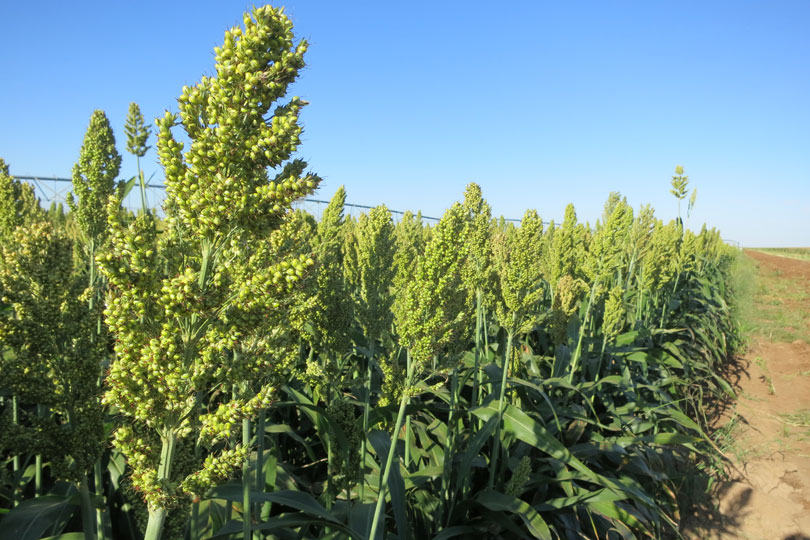By Jessica Domel
Multimedia Reporter
Farmers along the Texas Coastal Bend are encouraged to scout their grain sorghum for rice stink bugs and headworms this week following reports of higher-than-normal populations in fields.
“Some sorghum fields across the mid-coast have been inundated with rice stink bugs or headworms, or in some cases, both,” Stephen Biles, Texas A&M AgriLife Extension Agent Integrated Pest Management, said.
Stink bugs and head worms typically start feeding on grain sorghum as the head of the plant starts to bloom.
“It doesn’t take a lot of them to economically hurt your yields. That’s going to cause more yield loss than the cost of an insecticide application,” Biles told the Texas Farm Bureau (TFB) Radio Network.
To add to the issue, some farmers report pyrethroid insecticides are not controlling rice stick bugs in their grain sorghum.
“I’ve talked with a number of people across the state, and in the College Station area last year, they were finding that fairly commonly,” Biles said. “Last year, they were having problems in rice controlling the rice stink bug with the pyrethroids, and it’s also been a problem in Louisiana and to the east of us.”
According to Biles, the pyrethroids usually work, but this is one of those times where they might fail.
In cases where the pyrethroid insecticides are not working, Dimethoate can be used.
“We found good control of stink bugs with that,” he said.
Biles noted the key is to scout grain sorghum fields as they head out. He scouts sorghum fields with a 2.5 or two gallon bucket.
“You just basically walk through the fields, and you’re beating heads into that bucket, two at a time or four at a time,” Biles said.
As you beat the sorghum heads into the bucket, the stink bugs or headworms fall in.
“It’s a simple, easy way to do it,” Biles said. “You’ll really know what you have when you do that. At different parts of the field that we’re checking, we’re looking at 20 to 30 or 40 heads at six or eight different places in a field.”
It’s important for farmers in the mid-coast area–Calhoun, Refugio and Victoria counties–to scout now, because grain sorghum in the area is moving into the soft dough stage.
Once the sorghum head starts blooming, that’s when the headworms and stink bugs start feeding.
Biles is finding sugarcane aphids in most fields, but they’re currently in low numbers in the mid-Coast region.
“Last week, we were in some fields, and it was just along the turn rows that we were seeing some honeydew on the leaves,” Biles said. “On those fields, we’d come back in five to seven days, and they’d be cleaned up.”
To prevent widespread sugarcane aphid damage, Biles said grain sorghum growers should continue to scout fields and take action when needed.
“The last thing you want to do is to not scout it, and then be walking into a field and see that you’ve had a huge explosion of aphids in that field,” Biles said. “There’s two reasons for that. One, they may have already caused yield loss. The second part is when they get in really high numbers, the insecticides don’t work as well.”
Insecticides like Transform or Sivanto work well when sprayed in a timely fashion, Biles said, but do not work as well when a field is already over run.
Biles is one of several AgriLife Extension agents for Integrated Pest Management who shares his findings and recommendations online. He uses social media, @MidCoastIPM on Twitter, and posts on an AgriLife website that farmers and others can subscribe to.
“There’s a lot of different ways that people can get information on how to grow their crops,” Biles said. “We’re one of those, and I think that our part is that we’re a non-biased source of information, and we hope that we’re good information.”
To find the IPM in your area, visit texasinsects.org.
A list of newsletters and blogs updated by AgriLife Extension Service staff and IPMs across the state can be found

